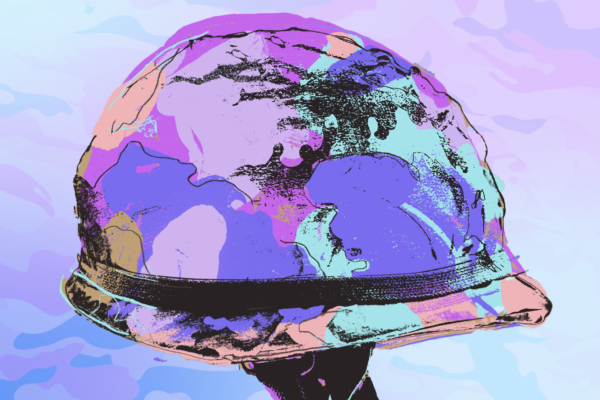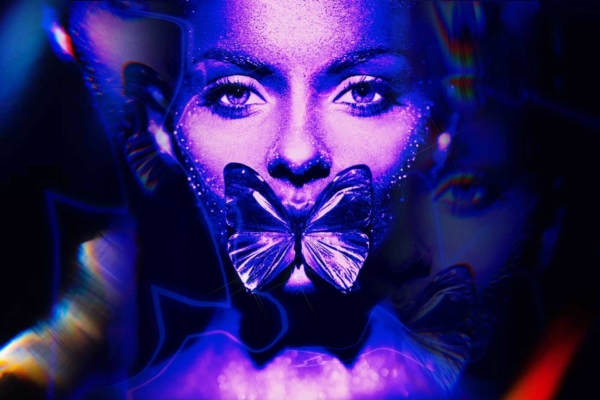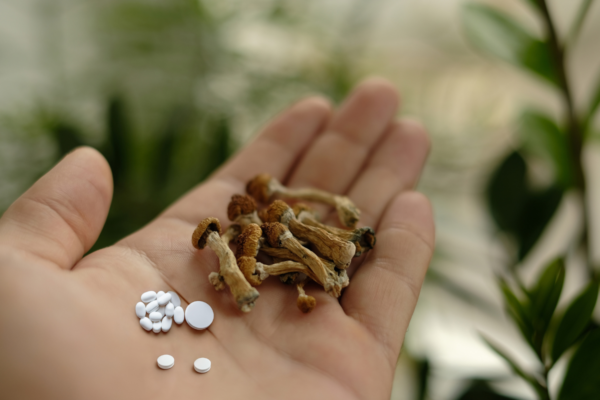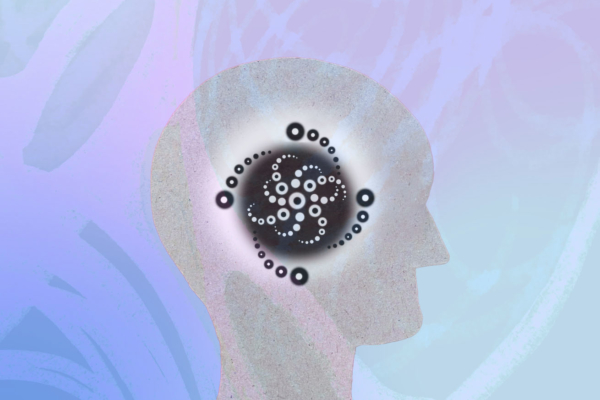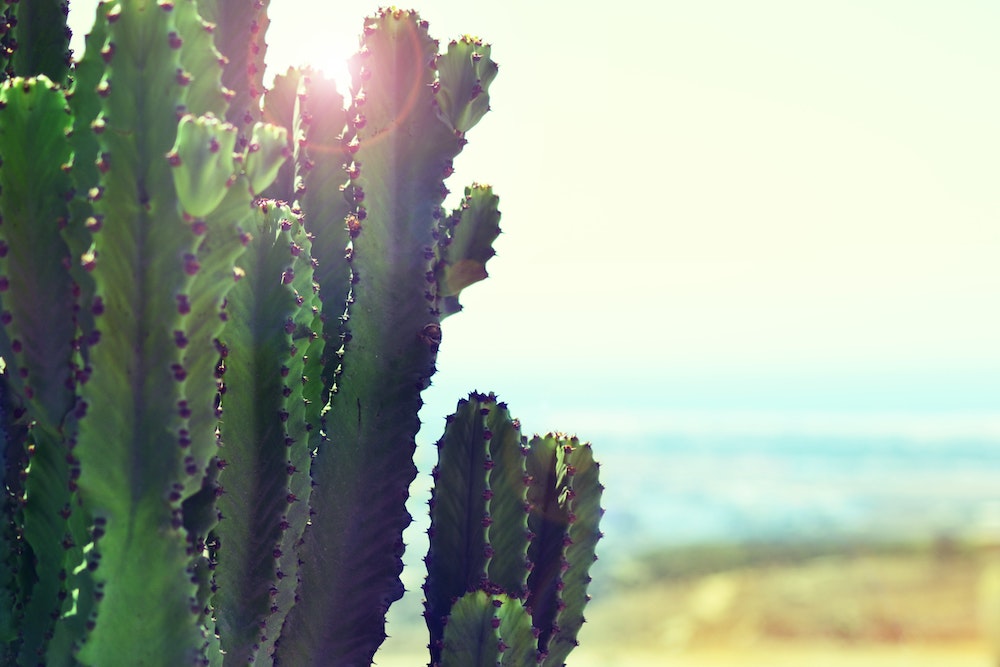
Mescaline is the primary hallucinogenic ingredient in certain cacti that grow throughout northern Mexico and in areas of southern Texas, revered for its spiritual benefits. These plants include peyote (Lophophora williamsii), San Pedro (Trichocereus pachanoi), and the Peruvian Torch (Trichocereus peruvianus).
Mescaline is derived from the fruit or button-shaped seeds that grow on the cacti. The seeds are cut off and can be eaten either fresh or dried. They can also be soaked and the liquid ingested. Or, it can be ground into a powder for capsules or smoked.
Scientifically known as 3,4,5-trimethoxyphenethylamine, mescaline is often compared to other psychedelic drugs like LSD and psilocybin.
According to the journal Oxidative Medicine and Cellular Longevity, mescaline affects the central nervous system by binding to the serotonin receptors in the brain and stimulating the cortex. Serotonin is the key hormone responsible for happiness and well-being. The cortex is the area of the brain responsible for functions such as sensation, perception, memory, association, thought and voluntary physical action.
The effects of mescaline vary from person to person based on dosage taken and external stimuli. The effects are usually felt about one or two hours after ingesting or smoking the substance and peak about two hours later. The high gradually wears off over the next eight to 18 hours, generally leaving behind a sense of peace and calm.
What does taking mescaline feel like?
While taking mescaline, people may experience any of the following psychological effects:
- Intense visual distortions or hallucinations
- Auditory hallucinations
- Altered perception of the body in space and time
- Extreme emotions ranging from anxiety to joy
- Preoccupation to details or inability to concentrate
- A sense of unreality
Physical symptoms that may accompany a mescaline trip include:
- Increase in body temperature, sweating
- Increased heart rate
- Dilated pupils
- Shaking
- Dizziness
- Nausea and vomiting
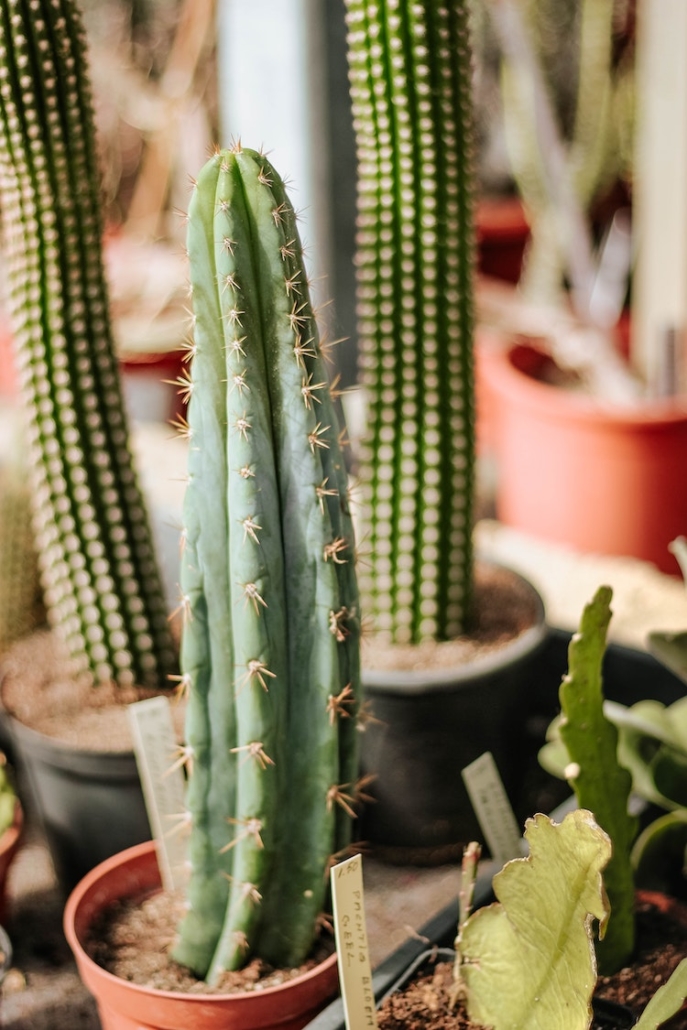
Mescaline ceremonies
The indigenous people of North and Central America have used mescaline for hundreds of years for medicinal purposes and, especially, religious rituals or ceremonies. And the substance remains an important sacrament in many Native American cultures.
In fact, mescaline is illegal in the United States except in Oakland, California, since June 2019, when the city’s council voted unanimously to decriminalize mescaline along with psilocybin. Mescaline is also recognized in the U.S. as a sacrament in the Native American Church of North America. As such, it is allowed for use during these religious ceremonies under the 1994 American Indian Religious Freedom Act.
In certain circumstances, people not affiliated with the church may participate in ceremonies in the U.S. and Mexico. Ceremonies vary from tribe to tribe but are usually held at night and led by a shaman or tribal chief. Chanting, singing, praying and drumming often accompany the ceremony, as well as moments of quiet for personal reflection.
Mescaline effects
Mescaline was synthesized as early as 1918 by Austrian chemist Ernst Spath. In their 1990 book PiHKAL: A Chemical Love Story, Alexander and Ann Shulgin called mescaline one of the “Magical Half Dozen” compounds to be synthesized and studied. They described the appearance of pure synthesized mescaline as “magnificent,” with “long, glistening needles that are, in a sense, its signature and its mark of purity.”
Despite growing interest in psychedelic research, there have been few studies on the effects of mescaline. However, University Hospital in Basel, Switzerland is currently recruiting participants for a study comparing mescaline to LSD and psilocybin.
